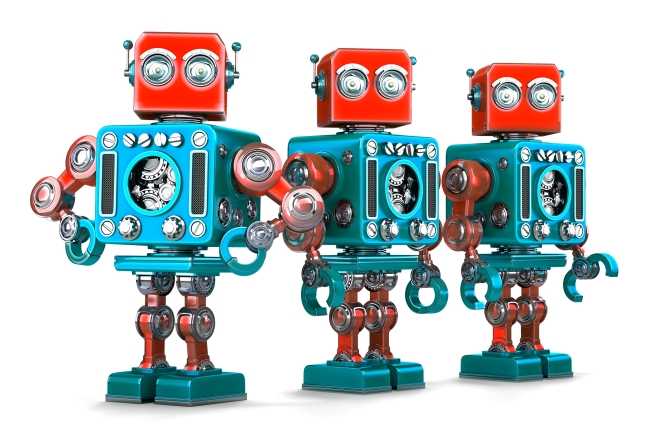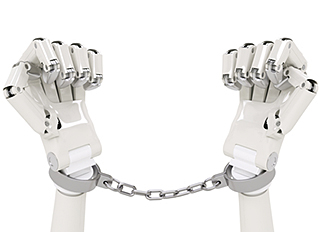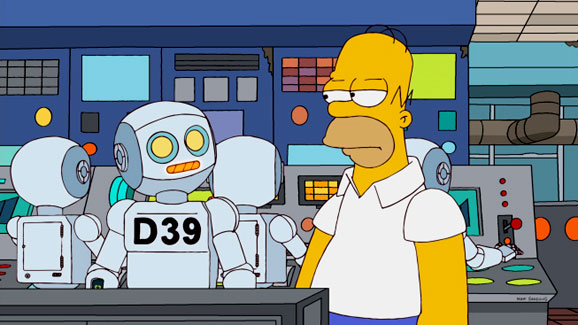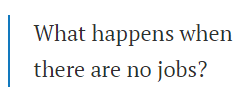This thought piece was written in collaboration with my peers Ryan Morgan, Ivy Nguyen, and Tiffine Wang. An abridged version is available on VentureBeat
Many have dreamed of robots taking over monotonous functions of our daily lives, freeing us humans to work on highly-skilled or creative tasks. Today, robots are increasingly making their way into our homes, offices, and public spaces, but this integration is not occurring in the way that most futurists and popular science fiction writers have anticipated. Here’s our top picks for tasks that were surprisingly easy to automate, and tasks that remain surprisingly hard.
Tasks Surprisingly Easy to Automate
Art
Prevailing wisdom claimed that computer systems would be incapable of creating art or music, because they lack the natural creativity of humans. However, automated systems have been surprisingly successful at generating works of art. Since the early 2000s, the University of London’s The Painting Fool program has been generating artwork, much of which has been featured in prominent galleries alongside human-created art. Google’s DeepDream software uses a recursive convolutional neural network to iteratively adjust images to morph them into objects in its database (usually dogs, buildings, and eyeballs). Other neural networks such as DeepStyle or Prisma use convolutional neural networks to stylize photos after the work of a specific artist. Google is now experimenting with automated curation of art exhibits through machine understanding of the style and topic of artists’ work. Logo generation systems like Withoomph, Tailor Brands, and Logojoy, use partially- or fully-automated systems to generate logos for a business based on keywords.
Researchers have also demonstrated systems that can generate music: Stephen Wolfram has made an automated music generator available to the public since 2005, the University of Malaga has created Melomics, a system that autonomously composes and plays music to match your lifestyle and activities, and IBM has partnered with artists to help compose music with Watson by combining massive musical datasets and their lyrics with sentiment analysis. Although these automated art and music systems are arguably derivative on the work of others, they are undeniably interesting and beautiful in their own right. Many scholars may argue that, like artificial art, all human art is derivative, although that is a discussion best left to philosophers. It appears that natural human creativity is not, in fact, necessary to create beauty.
Science/Research
Historically, scientific research has been conducted by highly educated researchers and lab assistants, and as such was not an obvious place for a blossoming of robotics applications. However, a core basis of science is reproducibility, and many aspects of science and research are extremely repetitive, requiring neither continuous thought nor the high level of education attained by the individuals who perform those tasks today.
Companies such as OpenTrons are working to save scientists both time and money by helping them automate pipetting, a precise but monotonous and labor intensive task used in many biological and chemical laboratories. Startups Arcturus and BioRealize enable scientists to remotely run many genetic engineering experiments in parallel, greatly reducing mistakes and lab time. Other startups, such as Emerald Therapeutics and Transcriptic, are hoping to move research to the cloud, using remote robotic systems to perform the experiment itself. In addition to vastly increased lab efficiency, these systems could greatly improve reproducibility, as researchers need only share their experiment’s source code.
Not content with automating manual lab work, machines are now automating scientific discovery and understanding. Scientists at Cornell’s AI lab created a program called Eureqa, that uses an evolutionary approach to model creation and is able to create models on data without being given any prior assumptions. The team has since commercialized the technology through a spinout, Nutonian. Researchers at Cambridge and Aberystwyth have created a similar autonomous science algorithm called Adam, which they claim was the first machine to independently discover new scientific knowledge. That same team moved on to the University of Manchester, where they created Eve, which is a robot designed to make the drug discovery process faster and cheaper. As the pace of scientific research increases, scientists may rely more and more on automated systems.
Legal
The practice of law requires many years of studying and understanding laws, cases, and other legal precedence. Law firms often employ large teams of paralegals and interns to perform the majority of initial research; current AI technologies can augment and eventually automate the bulk of that research, leaving the more difficult aspects of practicing law such as synthesizing the information and advising to trained legal professionals.
To date, case law, contract law, and advocacy law have seen the most automation. Startup DoNotPay helps users appeal traffic tickets; the bot started in the UK and has expanded to cover several US cities. Over a quarter million tickets have been successfully challenged, and several cities have banned the bot. ROSS Intelligence augments legal research by using AI to surface relevant legal passages and cases to increase the efficiency and quality of legal research. eBrevia uses AI to extract data from contracts to accelerate diligence, contract analysis, and other related applications. Legalist automates the qualification process for litigation financing and backs cases they identify as having a high success rate.
There is a ceiling, imposed by liability concerns, to how much law can be automated; a startup might expose itself if it advised a client on legal matters, so most companies likely can only research and synthesize information. Because much of the legal industry charges by the hour, it will be interesting to see to what degree lawyers will accept automation and other tools to increase the efficiency of their practice.
Policing and Security
Unlike warfighting robots, which have clearance to hurt or even kill humans, robots that work as a police force or physical premises security, particularly in areas far from any war zone, are expected to more closely follow Asimov’s three laws of robotics: avoiding injury to humans while still keeping an area secure. For this reason, many would expect criminals to ignore robotic security guards, knowing full well that the robots could not harm them.
However, the primary function of human physical security teams is to observe and report security incidents; due to the risk of liability to their employers, many human security guards are not allowed to interfere, making their work surprisingly easy to automate. Security automation to date has focused on augmenting existing security forces, inexpensively amplifying the eyes and ears of security guards without increasing their numbers. Traditionally, fixed camera systems could perform this task, but constantly monitoring a large campus by camera is difficult. Knightscope and Gamma 2 Robotics build ground-based security robots that act as “force multipliers” to provide deterrence through physical presence; these robots are being deployed at an increasing number of corporate campuses and shopping malls. Another startup, Nightingale Security, is using flying drone robots to help their customers carry out continuous surveillance. In time, robots may replace substantial portions of police and security forces, requiring humans only for resolving violent incidents.
Tasks Shockingly Hard to Automate
Cleaning
Cleaning is perhaps one of the most obvious and logical applications for robots, yet with the exception of the occasional household Roomba, robotic cleaning is not widespread. Not only is cleaning an extremely repetitive task that requires very little technical skill, but it is also a task that almost everyone has to do in their personal lives and despises. What makes the dearth of cleaning robots more perplexing is that the cleaning robot Roomba was one of the first commercially available robots to everyday consumers in 2002. Almost fifteen years later, there has not been any real innovation in terms of cleaning robots that has seen commercial success. While Roomba, which is made by iRobot is the best known of these robots, competing products are made by a healthy list of competitors, including Dyson and LG.
On the commercial side of the market, work on an automated janitor / cleaner has gone back at least as far as the 1980s, when Electrolux’s subsidiary, The Kent Company was working on a solution. Yet somehow, to this day, cleaning on a commercial scale is still done by hand. Several employees of Kent went on to create a company called Intellibot that creates a large scale automated floor cleaner called TASKI. Another large scale floor cleaner, the RS26, comes from a collaboration of Brain Corp and International Cleaning Equipment.
With that said, there are some very interesting applications on the horizon outside of floor cleaning robots. The startup Ecoppia is using robots to clean solar panels, and Kurion has a division that makes robots that are used to clean up nuclear facilities, including Fukushima.
Clothing and Textiles
It is surprising that textile manufacturing, one of the first industries to flourish in the industrial revolution through automation remains an incredibly hard to automate completely. Robots work best when manipulating solid objects. Textiles, however, shear, stretch, and compress, making them difficult for robots to manipulate, even though such manipulation comes naturally to humans. Machines today can dye and cut fabrics into the right shape for assembly and embroider intricate designs in an instant, but nimble human fingers are still required for assembling that fabric, sewing on buttons, pockets, and adding on delicate finishing touches such as lace and pleats.
Even today, few companies have made any headway in sewing. Softwear Automation is one such company, which uses high speed cameras to instantaneously map the position and orientation of a textile as it flexes and bends, allowing the robot to make micro-adjustments as it sews pieces of fabric together. Nike is using automation to circumvent the traditional shoe assembly process altogether with its FLYKNIT line of shoes, which uses robotics to custom-knit the top portion of a shoe out of one continuous thread, doing away with the need to assemble the shoe from multiple separate pieces of material. Alternative textile and clothing manufacturing techniques such as 3D printing are been heralded as poised to revolutionize the fashion industry, but the items created by these processes and new materials remain niche outside of the athletic wear market.
Automation has struggled with clothing care almost as much as it has with sewing. Although machines can wash and dry clothing (sometimes in the same machine), the process of loading, unloading, and folding remains repetitive and laborious with few reasonable automated alternatives. Startups Laundroid and Foldimate have developed laundry folding robots, although their solutions are large desktop or closet-sized machines with limited capacity. Robotic clothes care systems similar to those imagined in science fiction are likely many years away.
Farming
Automating the harvesting of crops that are today picked by hand has so far been hard because many of these crops can be damaged easily and computers have had trouble with visual recognition of the fruit or produce they are trying to pick. Despite these challenges, there are many companies working towards fully automating a variety of agricultural tasks. Harvest Automation has created a robot called the HV-100 that can do a series of tasks in nurseries and greenhouses. According to one of their customers at McCorkle Nurseries, “We have many plants in the field that have been growing for as many as 24-months; they’ve been spaced, collected and spaced again and they haven’t been touched by a person since the day they were potted.”
In the fruit picking space, companies such as FFRobotics, Abundant Robotics, and Vision Robotics have worked on solutions for fruit picking. While none of their products are widespread yet, their efforts are helping pave the way towards a more automated world. Abundant Robotics, for instance, is avoiding many of the difficulties of robotic grippers and instead using a suction device to pick fruit.
There are also a series of startups working on weeding and thinning robots. Among these are Naio Technologies, which has created a robot called Oz for small scale weeding. It is also working on a robot called Dino for larger scale weeding, and a robot named Ted for vineyard weeding.
It should also be noted that many of the the traditional agricultural players are also working towards automating the farm. John Deere has offered some form of kit for autonomy for years, the current version being AutoTrac. While not in farming, Deere also offers a robot called the Tango E5, which is essentially a Roomba for mowing a lawn. Other competitors in the autonomous tractor space include AGCO and Kinze. AGCO, through its subsidiary Kendt, is working on a project they call MARS, or Mobile Agricultural Robot Swarms. These swarms of small farming robots will be dragged into fields in logistics units (which also hold seed supply as well as batteries for the robots), and then split up to do their work.
Looking Ahead
Several themes emerge from this overview that enable us to predict what’s next for the robotics industry. Today, robotics have made significant headway into automating repetitive tasks requiring little finesse and tolerant of blunt solutions, like washing laundry and dishes or creating large quantities of textiles. Tasks that require processing large amounts of data and information can also be augmented by automation. On the other hand, tasks that require complicated manipulation of materials are still difficult to automate and need more skilled assistance, as does the deeper decision making and synthesis of information that robotics help us surface. As much as robotics have transformed many major industries, the need for humans to complete the last finishing steps, as diminishing as they may be, makes it abundantly clear that total robotic world domination remains out of reach.
This thought piece was written in collaboration with my peers Ryan Morgan, Ivy Nguyen, and Tiffine Wang. An abridged version is available on VentureBeat



 obots outnumber humans roughly ten thousand to one. In this world, large armies of robots perform every task required to maintain the estates, including bookkeeping, construction, food production, and even highly-personal tasks like childcare. Solarian citizens who own these robots are then free to pursue their intellectual whims in large, luxurious mansions built and maintained by the robots. Likewise, in the future depicted in Gene Roddenberry’s Star Trek, manufacturing is almost entirely automated and money is abolished, allowing citizens the freedom to pursue their passions. However, Roddenberry also displays the dangers of over-reliance on automation. In
obots outnumber humans roughly ten thousand to one. In this world, large armies of robots perform every task required to maintain the estates, including bookkeeping, construction, food production, and even highly-personal tasks like childcare. Solarian citizens who own these robots are then free to pursue their intellectual whims in large, luxurious mansions built and maintained by the robots. Likewise, in the future depicted in Gene Roddenberry’s Star Trek, manufacturing is almost entirely automated and money is abolished, allowing citizens the freedom to pursue their passions. However, Roddenberry also displays the dangers of over-reliance on automation. In